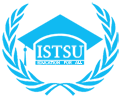The definition of technology is science or knowledge put into practical use to solve problems or invent useful tools.
History of Technology
Stone Age – The development of simple tools from wood or shards of rock and the discovery of fire, which provided a way to cook food and create heat and light, were technological developments which allowed people to accomplish tasks more easily and quickly.
Bronze Age – The evolving ability of man to work with metal gave the ability to form stronger tools, and the introduction of the wheel allowed people greater ability to travel and communicate.
Iron Age – The ability to work with harder metals than copper and tin, to smelt iron, and to be able to remove iron from ore allowed for rapid increases in weapons making, brought the development of tools that benefit civilization and gave greater ability to perform tasks, such as manufacturing and transportation.
Computers and the Internet – The ability to perform basic thinking processes much faster enables business, science and commerce to proceed much more efficiently.
An example of technology is the Internet which has made up-to-date information available to anyone with access in a matter of moments and provides real time information about events around the world.
An example of technology was during the Stone Age when the first knife or shovel was made from a piece of stone or obsidian.
An example of technology is the products that were invented during the space program, which have allowed engineers and other scientists to use variations of these products and materials in manufacturing.
An example of technology is ultra sound, MRI, CAT scans and other forms of nuclear imaging, which allow doctors to see inside the human body using a blending of medical technology, nuclear technology and computer technology.
The purposeful application of information in the design, production, and utilization of goods and services, and in the organization of human activities.
Technology is generally divided into five categories
Tangible: blueprints, models, operating manuals, prototypes.
Intangible: consultancy, problem-solving, and training methods.
High: entirely or almost entirely automated and intelligent technology that manipulates ever finer matter and ever powerful forces.
Intermediate: semiautomated partially intelligent technology that manipulates refined matter and medium level forces.
Low: labor-intensive technology that manipulates only coarse or gross matter and weaker forces.
